Search the Special Collections and Archives Portal
Search Results
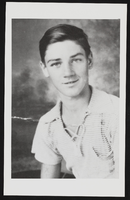
Portrait of Theodore Parsons: photographic print
Date
Archival Collection
Description
Image
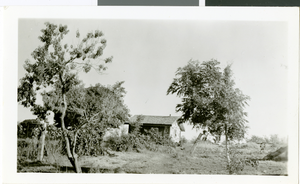
Photograph of Corn Creek Ranch, Nevada, circa 1937
Date
Archival Collection
Description
Image
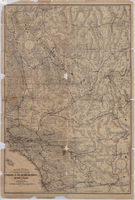
Map of a portion of southern California and southwestern Nevada embracing the arid region of Mojave & Colorado Deserts including Death Valley, circa 1936
Date
Description
Image
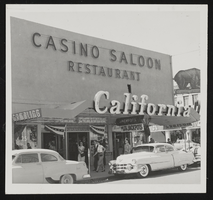
Photograph of California Club, Las Vegas (Nev.), 1945-1955
Date
Archival Collection
Description
Image
LeFors, Jerry, 1921-2008
Jerry LeFors, from the "Greatest Generation," was born in Oklahoma in 1921 and attended grade schools in West Texas. He graduated from high school in Lawton, Oklahoma in 1938 and then continued his education at Cameron Junior College in Lawton, where he graduated in 1940.
While in college he enjoyed playing the drums and had his own dance band in addition to his studies. He also became enamored with flying aircraft and became a Civilian Flight Instructor in Illinois in 1941, following graduation.
Person
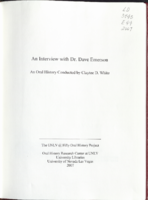
Transcript of interview with Dr. David Emerson by Claytee D. White, December 21, 2005
Date
Archival Collection
Description
Text

Transcript of roundtable interview about Kristallnacht with Esther Finder, Raymonde Fiol, Alexander Kuechel, Philipp Meinecke and Rabbi Felipe Goodman, by Barbara Tabach, March 17, 2015
Date
Archival Collection
Description
In this interview, the participants discuss their experiences during Kristallnacht, and the commemoration events in southern Nevada with Holocaust survivors and their families. Mr. Kuechel recounts his journey through concentration camps and being liberated by the Russians. Rabbi Goodman talks about meeting Mr. Meinecke, whose grandfather was a high-ranking SS officer. Meinecke discusses his upbringing in Germany and trying to learn about his family's involvement in the Holocaust, and the hope he felt after the fall of the Berlin Wall as Jews returned to Germany. The group discusses the importance of Holocaust education because there are still so many untold stories.
On November 9th to November 10th, 1938, in an incident known as Kristallnacht, Nazis in Germany torched synagogues, vandalized Jewish homes, schools and businesses, and killed close to one hundred Jews. In the aftermath of Kristallnacht, also called the Night of Broken Glass, some thirty thousand Jewish men were arrested and sent to Nazi concentration camps. German Jews had been subjected to repressive policies since 1933 when Nazi Party leader Adolph Hitler became chancellor of Germany. However, prior to Kristallnacht these Nazi policies had been primarily nonviolent. However, after Kristallnacht conditions for German Jews grew increasingly worse. During World War II, Hitler and the Nazis implemented their so-called final solution to what they referred to as "the Jewish problem" and carried out the systematic murder of some six million European Jews in what is now commonly known as the Holocaust.
Text
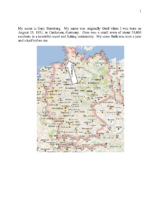
Biographical essay by Gary Sternberg, 2014
Date
Archival Collection
Description
Gary Sternberg grew up in Germany, witnessing anti-Semitic propaganda as early as age 7. He describes some of the experiences his father endured at a concentration camp, and his escape to China. He and his mother reunited with his father in Shanghai in 1940. They left Shanghai in 1948, eventually settling in Cleveland. He and his family came to Las Vegas in 1969.
Text
Southern Nevada Jewish Heritage Project Community Collection
Identifier
Abstract
The Southern Nevada Jewish Heritage Project Community Collection is comprised of organizational records, photographs, event programs, and ephemera donated by members of the Southern Nevada Jewish community as part of the University of Nevada, Las Vegas University Libraries’ Southern Nevada Jewish Heritage Project. Materials document the history of the Jewish community and Southern Nevada from 1941 to 2017. The collection provides information about family life, religious rituals, community events, and local businesses and organizations.
Archival Collection
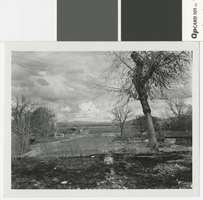
Photograph of the Las Vegas Ranch looking northeast, circa 1940
Date
Archival Collection
Description
Transcribed Notes: Transcribed from back of photo: "The Old Ranch - at the Old Mormon Fort, Las Vegas Nevada - about 1940"
Image
